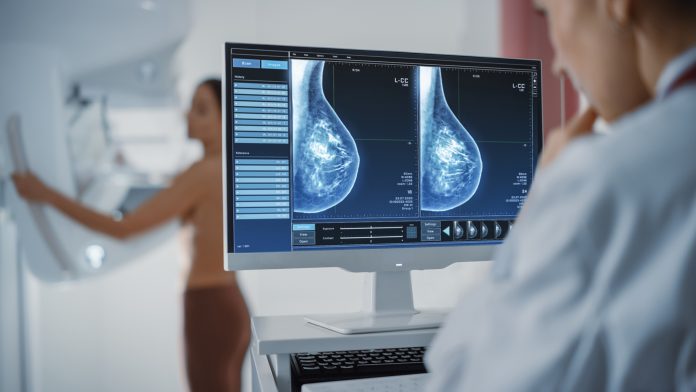
Cutting-edge technology harnessing Artificial Intelligence (AI) is revolutionising the early detection of breast cancer, pinpointing women at high risk through mammography screening examinations.
Led by an international team based at Sweden’s Karolinska Institutet, a groundbreaking study published in The Lancet Regional Health – Europe highlights the efficacy of this method in identifying breast cancer risk across various European nations.
This early identification prompts further examinations, significantly enhancing the prospects for timely detection. Validated across a cohort of over 8,500 women in Italy, Spain, and Germany, the model demonstrates robust performance across diverse populations.
Limitations of current screening methods
Traditional mammography programmes screen women over a fixed age and time interval – usually every other year.
However, previous research shows that breast cancer risk varies among women, meaning some would benefit from individualised screening.
In contrast, commonly used breast cancer risk models that have existed for decades are predominantly based on a woman’s family history of breast cancer and lifestyle factors.
The major problem is that many women are diagnosed at a late stage and can develop breast cancer between screenings.
Identifying breast cancer risk with AI
In their study, the researchers trained Artificial Intelligence to examine screening images to pioneer a new type of risk model that identified minuscule changes in the images that are undetectable by the human eye.
Mikael Eriksson, leader of the study and postdoc researcher at the Department of Medical Epidemiology and Biostatistics at the Karolinska Institutet, explained: “It’s not as simple as traditional models that use a handful of factors such as genes, as there are thousands of factors in the image that are taken into account.
“The AI is able to find different patterns in these factors, each of which is weak but that the AI can combine. The AI can also give an overall assessment of what is likely to happen in the breast in the future.”
The AI breast cancer risk model expertly determines which patients need additional screening on top of their normal mammography so that tumours can be located early.
The study showed that the AI model was able to identify women who had a breast cancer risk seven times higher than the normal population.
Nevertheless, the purpose of the study was not to evaluate the model’s clinical use but to see if it works in different mammography programmes around Europe after already being tested in Sweden and the US.
Dr Eriksson added: “First, you develop the model and test it in a slightly more limited population, and then you go on to demonstrate generalisability in other populations, after which you reach a point where you believe that the model works.”
The researchers aim to perform a clinical study in Europe where women will be tested, screened, and administered different treatments depending on the risk value provided by the AI model.









